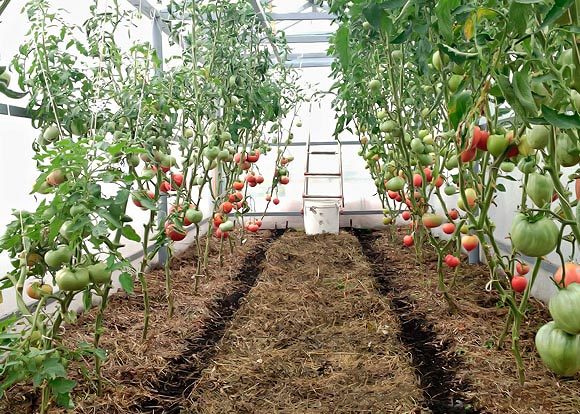In the modern world, great attention is paid to the cultivation of organic products and vegetables. Advanced and improved agro-industrial technologies are being introduced that allow obtaining a rich crop of tomatoes in polycarbonate greenhouses at minimal cost. One of such technologies is mulching - covering the surface of the fertile soil layer with materials of natural or artificial origin. Let's figure out whether to mulch the tomatoes in the greenhouse and how to do it.
Table of contents
The purpose of mulching tomatoes in greenhouses and open ground
The main objectives of mulching tomatoes grown in the greenhouse, and in the open field are:
- Protection of greenhouse soil from excessive compaction and the formation of an impermeable crust;
- Ensuring the natural moisture and temperature of the soil for a long time;
- Reducing the frequency of irrigation and the amount of fresh water used;
- Preventing the development and transfer of pathogens and pests from soil to plants;
- Protection against drying of the upper layer of the greenhouse soil as a result of the action of intense solar radiation;
- Improving soil fertility and increasing the overall yield of tomatoes.

Peculiarities of Tomato Mulching
In conditions of a closed greenhouse space and elevated temperature, the accelerated process of moisture evaporation occurs. High humidity slows the growth and development of tomatoes, creates favorable conditions for the emergence of various diseases.Therefore, the introduction of mulch is most important in the conditions of greenhouse cultivation of vegetables.
Necessary materials
The most common are the following materials:
- organic (natural): sawdust, hay or straw, freshly cut grass, compost;
- inorganic (artificial): paper and cardboard, film, roofing sheet, roofing felt and other types of roll coating materials.
Film
An opaque light stabilized film can be used as a film material. Before laying on the bed, the film is straightened along the entire length and fixed. For planting seeds or seedlings, special holes are pre-made in the film.
Mowed grass
The mowed grass for a long time retains the natural soil moisture in the greenhouse, which makes it possible to reduce the number of waterings by several times. To protect against insect pests, freshly cut grass is finely ground and left to dry in the sun for several days.
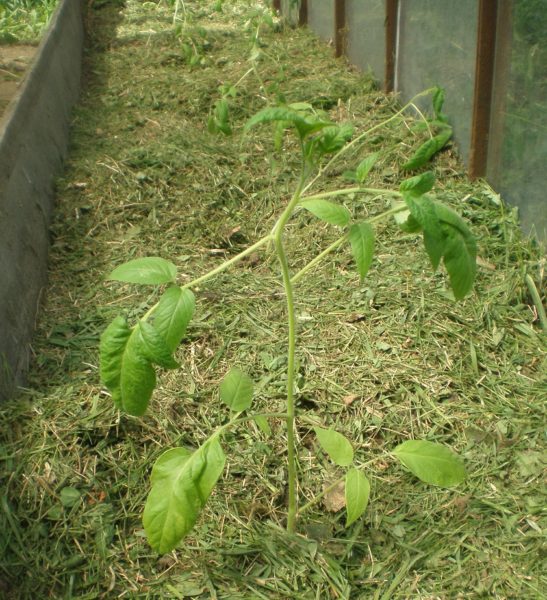
Hay (straw)
Mulching with dried grass or straw helps prevent weed germination and provides reliable plant protection against pests.When growing low-growing varieties of tomatoes, hay plays the role of bedding for the fruits lying on it. Fruits always remain dry, clean, and therefore not susceptible to decay or infection by pathogenic bacteria.
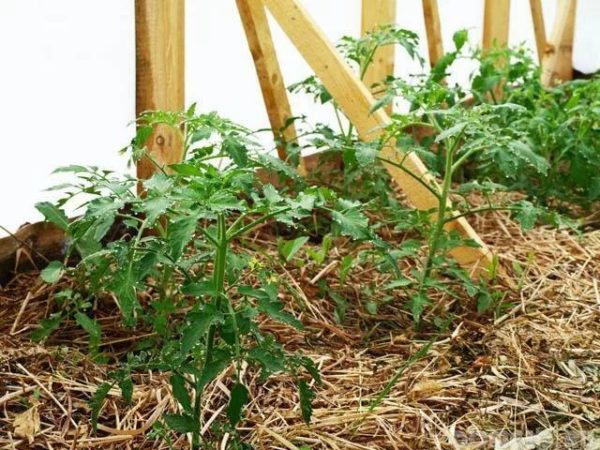
Paper (cardboard)
Before you mumble a bed of newspapers, paper or cardboard, the soil around the tomatoes is loosened and additionally fertilized. Then the paper is crushed and put a layer on the bed, previously moistened with water or a solution of liquid fertilizer (compost).
The main disadvantage of paper is the absence of useful substances, therefore, a layer of fertile organic matter is added above the laid layer.
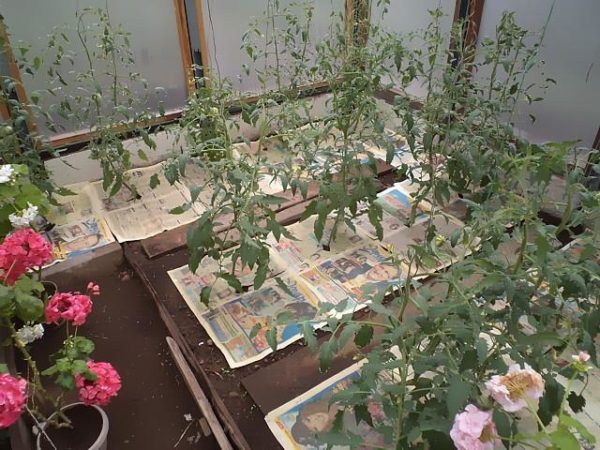
Sawdust
Mulching with sawdust is considered the most common method.
The thickness of the layer laid is equal to 10-15 cm. A thinner layer can cause rapid weed germination. Sawdust perfectly keeps the soil moisture, so the soil is always in a natural, moist condition.Sawdust makes it easier to weed and remove weeds. Sawdust perfectly absorb and allow excess water to pass through.
The main disadvantage of sawdust is that they take most of the beneficial trace elements (especially nitrogen) from plants and contribute to soil oxidation.

Compost
Compost mulch is the most excellent type of protection and nutrition of tomatoes in the greenhouse.
The structure of the litter should be completely rotten, homogeneous, crumbly, odorless, without the inclusion of sawdust and any impurities. Horse manure is best suited as a compost for tomatoes.
The thickness of the layer is assumed to be 20 cm. In this case, the seedlings and seedlings of greenhouse tomatoes are planted not into the soil, but directly into the compost, to a depth of 1-3 cm.
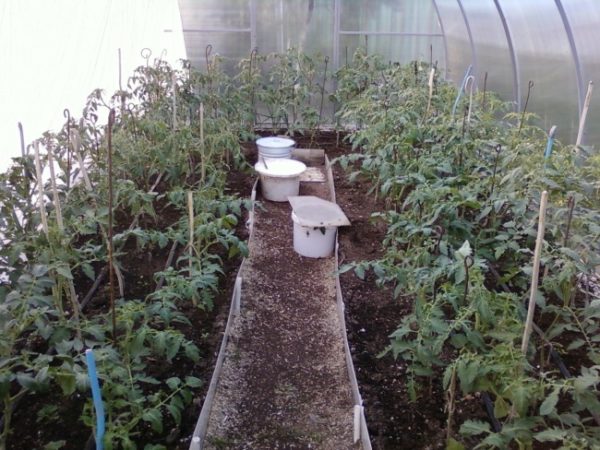
Unsuitable for mulch materials
As mulch for tomatoes grown in the greenhouse, it is not recommended to use the bark and leaves of coniferous treescontaining specific volatile substances and essential oils that can disrupt the vital activity of beneficial microorganisms. The most correct and effective will be the burning of these components, followed by the use of ash.
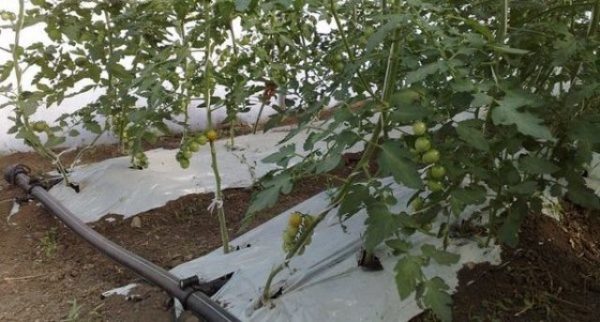
Also considered unsuitable tol (roofing felt) containing toxic substances. Not recommended to use pure peat, contributing to the oxidation of the soil.
Thus, the competent choice of the method and material for mulching leads to a significant reduction in the cost of growing tomatoes in the greenhouse. The numerous advantages of using this procedure allow you to get a rich and high-quality harvest of these beautiful and healthy vegetables.
